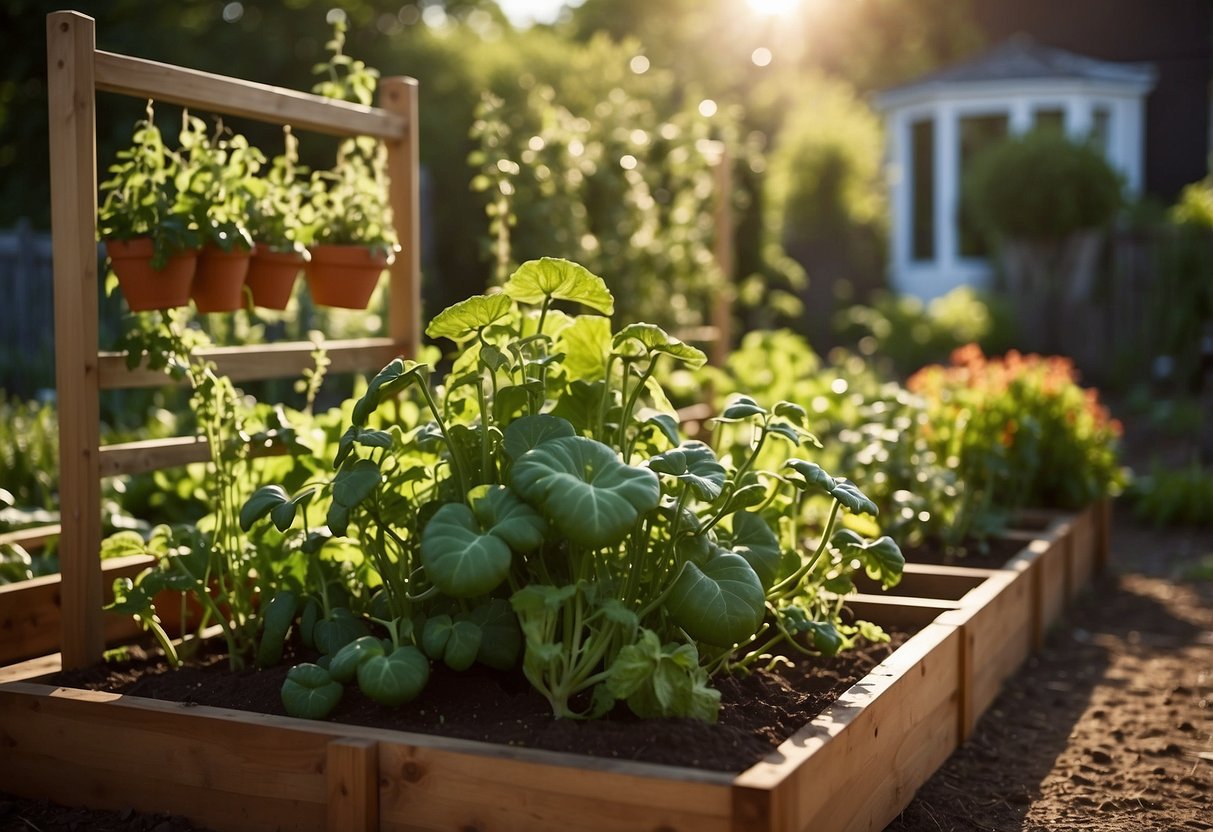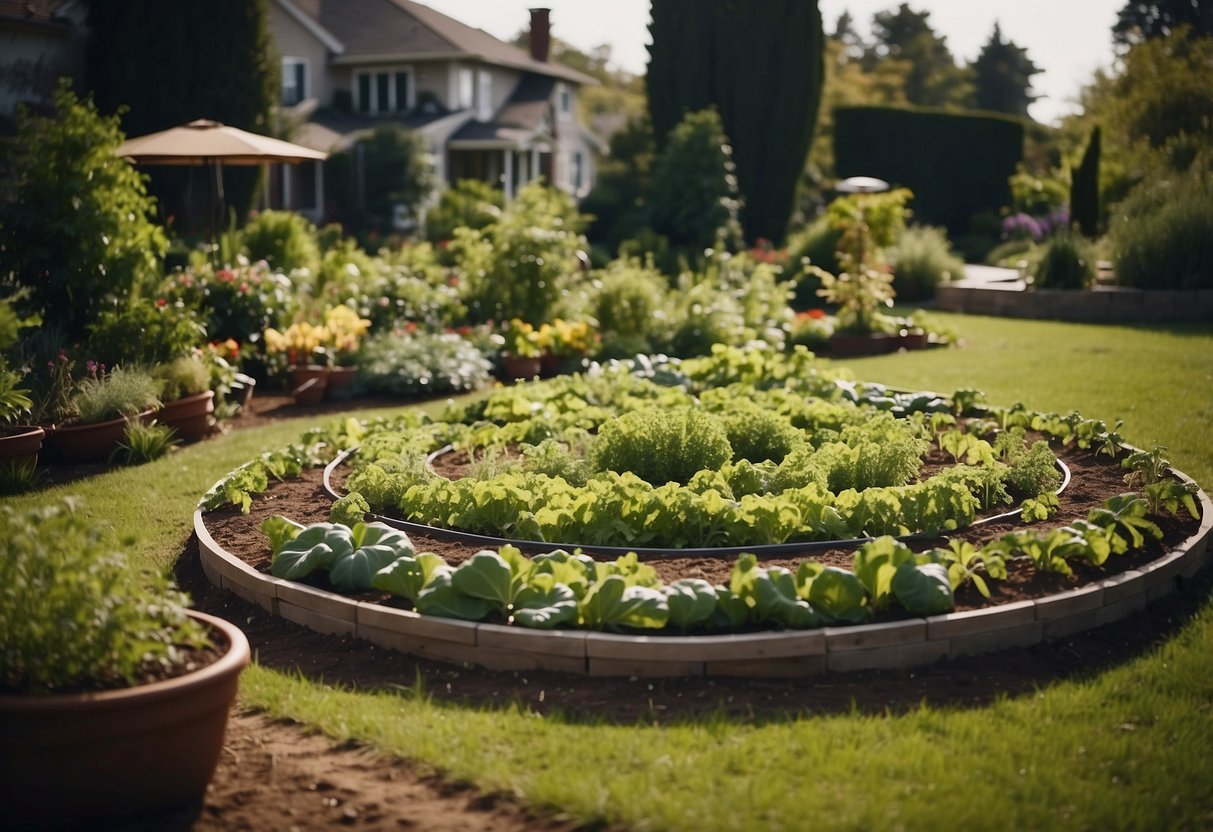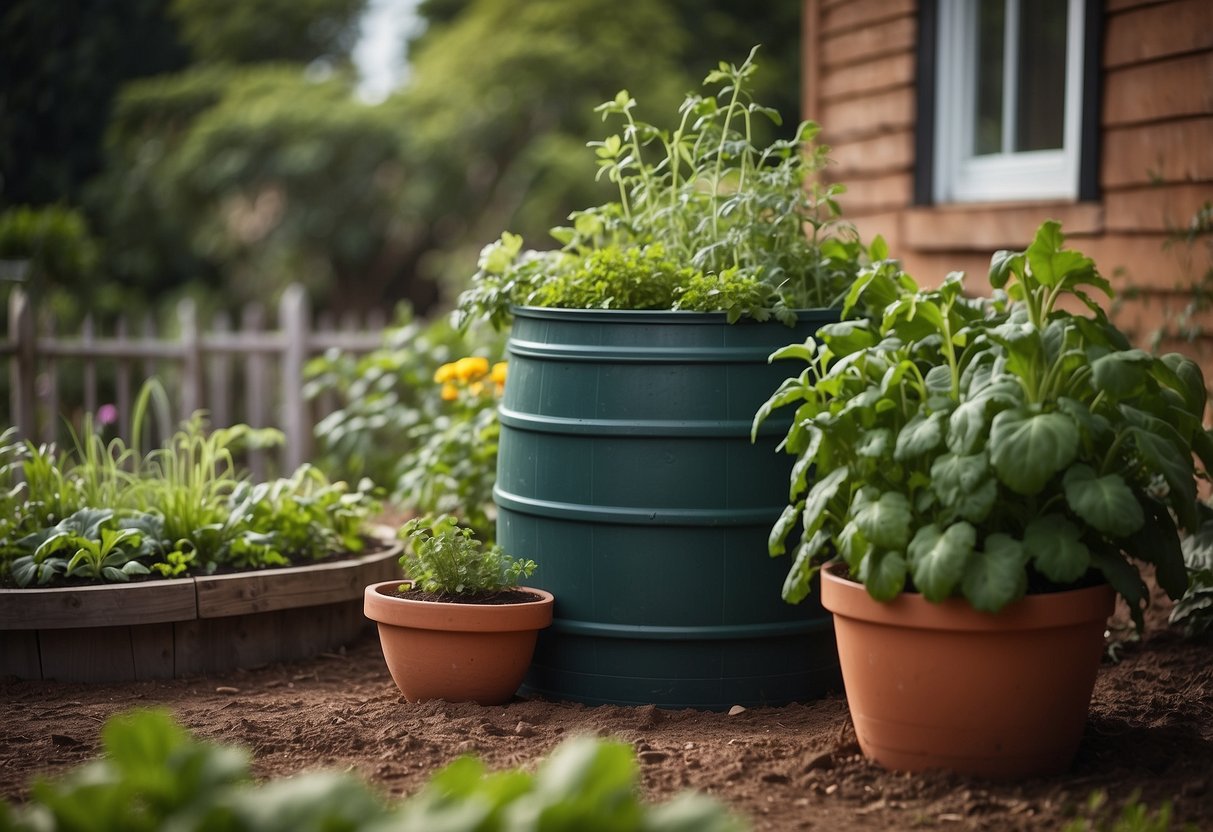Front Yard Vegetable Garden Ideas: Transform Your Outdoor Space
Transforming your front yard into a vegetable garden not only adds beauty but also provides a convenient place to grow your own food. You’ll enjoy fresh produce right at your doorstep, making it an efficient way to eat healthier and save on grocery bills.

Why not make the most of your outdoor space by creating a vibrant and productive garden that enhances curb appeal? With the right design and plant choices, your front yard can become a lush, green space that impresses neighbors and benefits the environment.
1) Raised Bed Gardens

Raised bed gardens are perfect for front yards. They help you control the soil quality and improve drainage.
You can make raised beds from wood, bricks, or even recycled materials. These beds can be simple or decorative depending on your style.
Raised beds are great for growing vegetables like tomatoes, lettuce, and carrots. They also make it easier to manage weeds and pests.
2) Trellis Structures

Trellis structures can bring both style and function to your front yard vegetable garden. They help plants grow upward, saving space and making the garden look more appealing.
For a simple option, consider a wood trellis. It’s easy to build and maintain. Another idea is using metal trellises for a more durable and elegant design.
You might also try DIY solutions like making a wigwam trellis with branches. These add height and visual interest while being practical for climbing plants like beans and peas.
3) Container Gardening

Container gardening is a fantastic way to add greenery and productivity to your front yard. You can use pots, window boxes, and other containers to grow your favorite vegetables.
Tomatoes do very well in containers and can be both beautiful and bountiful. Nightshades like peppers and eggplants are also great choices.
Make sure you use a quality organic potting mix with good drainage. This will help your plants thrive and make your container garden a success. For more ideas, check out these tips.
4) Vertical Gardening

Vertical gardening uses less space and adds beauty to your front yard. You can use a trellis panel to support pots with herbs, vegetables, and flowers.
Another idea is to use a wood slat fence with planters attached. This gives you more room without taking up much ground space.
Build a simple strawberry tower garden to grow trailing plants. This can fit in a corner of your patio or deck, adding a green touch wherever you place it.
5) Square Foot Gardening

Square foot gardening is a great way to organize your front yard vegetable garden.
Using a grid of 4×4 foot boxes, you can plant a variety of veggies in small spaces.
This method makes it easier to manage and harvest your crops.
A lattice laid across the top helps keep everything neat and separated.
You can enjoy multiple harvests from these densely planted areas. For more information, check out vegetable garden layout ideas.
6) Herb Spiral

Herb spirals are a great way to add dimension to your front yard vegetable garden. They save space and look beautiful.
You can grow a variety of herbs like rosemary, oregano, thyme, and sage. Herbs that prefer more shade and moisture, such as parsley and cilantro, can go on the north side.
Use rocks or bricks to build the spiral. Start with larger stones at the bottom and smaller ones at the top. This creates a sturdy and lovely structure. This method is both practical and decorative, making your garden stand out.
7) Companion Planting

Companion planting is a great way to boost your front yard vegetable garden. By growing certain plants together, you can enhance growth, deter pests, and improve soil fertility.
For example, planting corn, beans, and squash together, known as the “three sisters,” can benefit all three plants. Corn provides a support structure for beans, beans fix nitrogen in the soil, and squash covers the ground to prevent weeds.
Including flowers like marigolds can repel harmful insects and attract beneficial ones. Combining the right plants can lead to a healthier and more productive garden.
For more tips, check out this guide on companion planting.
8) Fruit Trees

Planting fruit trees can make your front yard both beautiful and useful. Choose dwarf varieties to keep the trees small and easier to manage.
Try apples, cherries, or even a small peach tree. These can fit well into corners or along pathways.
Adding fruit trees also invites pollinators like bees and butterflies to your garden. They help all your plants thrive.
9) Rain Barrel Irrigation

Rain barrel irrigation is a great way to keep your front yard vegetable garden watered while saving money and resources. By collecting rainwater, you can reduce your reliance on tap water.
You can position your garden near a rain barrel to make it easier to water your plants. This setup is also environmentally friendly.
Using drip irrigation along with a rain barrel can be very efficient. Gravity helps distribute water, which is both energy-efficient and beneficial for your plants.
For a DIY approach, a garbage can make a great rain barrel. Just drill holes for the spigot and overflow to get started.
10) Cold Frames

Cold frames are fantastic for extending your growing season into the colder months. They act like mini-greenhouses and protect your plants from frost and harsh weather.
You can build a cold frame using materials like wood, plastic, or even straw bales. A plastic cold frame is a popular choice for its durability and ease of use.
If you prefer, you can try a plywood and poly sheeting cold frame. Its sloped shape helps with rain drainage, keeping your plants safe and warm all winter long.
Planning Your Front Yard Vegetable Garden

Planning your front yard vegetable garden involves careful consideration of location and layout to ensure a productive and attractive space. Selecting the right spot with optimal sunlight and designing an effective garden layout are essential steps.
Choosing the Right Location
To select the best spot for your garden, consider the amount of sunlight the area receives. Most vegetables need at least 6 to 8 hours of direct sunlight daily. Checking for sun patterns in your yard can help you choose a sunny spot.
Next, evaluate the soil quality. Good soil should be well-draining and rich in organic matter. You might need to amend your soil with compost or other organic materials to improve its fertility.
Also, consider accessibility. Your garden should be easy to reach for watering, weeding, and harvesting. Placing it near a water source will make maintenance simpler.
Designing the Layout
Design the layout to maximize both productivity and visual appeal. You can use raised beds, which help with drainage and soil quality. They also make it easier to control weeds.
Think about plant height and spacing. Taller plants like tomatoes should be placed where they won’t shade shorter ones. Group plants with similar water and sunlight needs together to simplify care.
Incorporate paths to make it easy to move around your garden. You can use materials like gravel, wood chips, or stepping stones for an attractive and functional design.
Mix decorative elements like flowers with your vegetables. This not only beautifies your garden but can also attract beneficial insects and pollinators.
Soil Preparation

Proper soil preparation is key for a thriving front yard vegetable garden. This includes testing soil quality and improving its fertility to support healthy plant growth.
Testing Soil Quality
Before planting, you’ll need to know what kind of soil you have. Start by getting a soil test kit from a garden center or online retailer.
- Collect soil samples from different parts of your garden.
- Mix the samples together in a clean container.
- Follow the kit instructions to test pH levels, nutrient content, and texture.
Knowing the pH level helps you understand if your soil is too acidic or alkaline. Most vegetables prefer a pH between 6.0 and 7.0.
If the test shows deficiencies in nutrients like nitrogen, phosphorus, or potassium, you can address these by choosing the right amendments.
Improving Soil Fertility
To boost fertility, you should add organic matter. Here’s how:
- Compost: Mix in well-rotted compost to improve nutrient levels and soil structure.
- Manure: Use aged manure for a rich, nutrient-dense option.
- Cover Crops: Plant cover crops like clover or vetch during the off-season. These improve soil health by adding nutrients and organic matter.
Additionally, consider using mulch to retain moisture and prevent weeds. A 2-3 inch layer of organic mulch, such as straw or wood chips, works well.
Regularly turning the soil and adding organic amendments will keep it rich and fertile, providing the best conditions for your vegetables to grow.
Vegetable Varieties for Front Yards

Choosing the right vegetables for your front yard involves considering your climate and the visual appeal of the plants. Here are some tips to help you select the best varieties.
Climate-Appropriate Choices
Selecting vegetables that thrive in your climate is crucial. In cooler regions, leafy greens like spinach and lettuce are good options. They grow well in mild temperatures. Root vegetables like carrots and radishes also perform well in these conditions.
If you live in a warmer area, try planting tomatoes, peppers, and squash. These vegetables need plenty of sunlight and warmth to grow. Herbs such as basil and oregano can also handle the heat and add great flavor to your meals.
Always consider your local growing season. Start with plants suited to the beginning of your growing season and rotate different crops as temperatures change.
Aesthetic Considerations
Vegetables can also add beauty to your front yard. Swiss chard is a stunning plant with colorful stalks in red, yellow, and orange. It provides a splash of color while being edible.
Purple kale and rainbow carrots can also offer visual interest. Their unique hues make your garden stand out. Think about plant shapes too. Bush beans can add a lush, green look, while vertical climbers like peas or cucumbers can create height and structure.
Mixing these decorative vegetables with flowers can enhance the overall appearance. Consider using lavender or marigolds alongside your vegetables. These flowers not only look good but can also help in pest control, making your garden both beautiful and practical.







